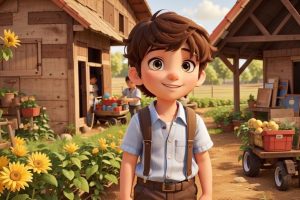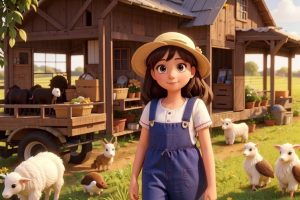How Technology Gives Vibrations in a Frozen Memory
You take a picture, click. Stop a moment. Now, suppose such a picture could yawn, stretch, and without further ado start a tango on your screen. Here, the term ai animate picture comes in-giving life to a non-moving picture. None of this requires a Hollywood budget or even the services of a film crew. It is just you, in a choice of algorithms. The concept by itself seems stolen from a science fiction film or a computer fantasy.
But it is more than a technological parlor trick. With AI-assisted animation tools, everybody is becoming closer than ever to said morning meeting and the caffeine. Using only a few taps, old photos of the family and self-images at graduation ceremonies, personal and favorite pets can be brought to lifelike dimension, even to be expressed whimsically. Suddenly, memories do not just remain there; they pirouette, grimace, wink, or break into a grin. The results? Hypnotic, even slightly spooky, and always a topic of discussion.

What Goes into AI Animation?
Quick sidebar on how this works. Animated photo tech involves the use of learning models – reducing their huge amounts of video and image data through complex mathematical frameworks. These avatars analyze and emulate facial expressions, head nods, eye-twitches, and even that little upward twist of a mouth on a bashful half-smile. Give it a still face and, voila: the AI puppet master nudges pixels to resemble how light would reflect off of real moving skin and eyes. Add voice or music, and the image comes to life to lip-sync or nod along to the beat.
Though this may sound like black magic, the recipe involves an integration of pattern recognition in combination with creativity. What blows the mind even more is that using these tools, even those who are not animation experts can create animated clips that have character. The technology levels up the field of animation – removing it as the domain of animation experts.
Photos of Families and Fanciful Fables
Perhaps you have already encountered a popular viral video with the text animated for social networks. The oversaturation of singing ancestors, stoic presidents serenading with pop music, or grumpy old mugs turned into fancy GIFs are only a few chances of it being the case. Others have it so that they can bring great-grandparents to the digital world, and this makes an ancient sepia picture look like a Disney episode. Other folk mess with their friends’ selfies, making them wobble about like a clappy avatar, or they make meme-able reaction videos.
That is when things get crazy. The AI motion effects aren’t restricted to the slightest movement of the face (blink) or mouth (twitch). You can make surreal rainstorms congeal behind the smile of your best friend. Or by some touch of algorithmic magic, move a cat itself through pixelized jungles, even without shooting the bow. This seemed like a world of big animation studios or viral ad agencies just one or two years ago. It is now being released as applications and websites that anyone can experiment with.
Add to that the tools that transform normal photographs into slow zooms, beautifully creative panning, or even 3D-like effects. A tree in the autumn can lose pixel-leaves. A smiling child is able to make some simple waves. Family albums suddenly jump out onto the screen – pun intended again.

Storytelling Reimagined, Installed One Frame at a Time
The transition between photo and motion provides new ways of narrative potential. Features that were once time-consuming, such as spending hours with video software and painstakingly going frame by frame, are now done in mere seconds. A travel memory, such as a scrumptious mouthful in Rome or a rollicking sunset, can be bitten into a digital souvenir. Moments are filled richer and fuller. Occasionally, some antics are so startling that the whole family is rendered speechless, including Grandma.
Consider personal storytelling. Instead of writing long textual posts or sheer wall posts of photographs, one can now create small movies that have more power, more feeling. With the click of a mouse, emotion flies out of the screen. It is laid-back closeness.
The creatives are also crossing borders. Animators have toyed with face morphing, attempting to convert old work into walking, winking beings. Marketers can give some teeth to what would otherwise be crusty campaigns. Separated families are using it to cushion the impact of separation – grandpa’s face lines smiling at a new grandchild, all based on a fuzzy old photograph.
The AI Creative Toolbox: Quick, Easy, Oftentimes Frustrating
All is not milk and honey. There is nothing foolproof about AI animators. Smiles are sometimes jerked across the cheeks, and an eyebrow or two occasionally takes off in a new and hitherto unknown direction. That unpredictability, however, has its potential to produce creativity. Outtakes get out meme. Esoteric terms are the lifeblood of communal minstrelsy.
In the case of the latter, however, the glitches trigger more depth to consider in terms of digital authenticity. Is all animation in the form of motion of this kind true? Will we miss the open quietness that a photograph produced? These are the arguments that are sounding throughout where AI comes into contact with art.
Creative potential wins over the foibles, however. Bringing theatrical effects in motion panning over stagnant family snapshots, all the way to having school portraits warbling with traditional tunes through digital recombination, individuals have the choice to remodel their recollections. Artists mix together the past and the laughs. Photo enthusiasts employ paralyzingly slow zooms to waltz out a tinge of nostalgia. Usually, even completely ordinary shots, such as a spilled bowl of cereal, can become silent films that can be appreciated by the TikTok audience.

Simplifying the next wave of Photo Storytelling
The border that was separating photographers and animators, the border of being a passive observer and an active participant, is becoming narrower each day. But AI doesn’t substitute talent, it amps up playfulness. It encourages everyone to experiment, make a mess, and laugh, and repeat.
This means that when you next take out an old photograph of your dog or shake the dust off those discomforting school group images, you can take a wild stab at transforming the thing and through the magic of technology, puff it up with a few of these digital pixels to get it moving: To blink, laugh, even perhaps moonwalk across your timeline. And is not some of that rather magic?
